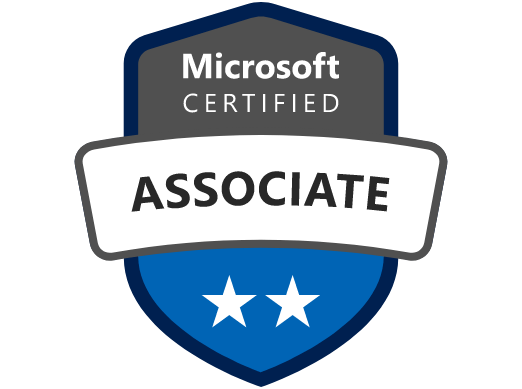
Course Description
Customer Data Platform specialists implement solutions that provide insight into customer profiles and that track engagement activities to help improve customer experiences and increase customer retention. In this course, students will learn about the Dynamics 365 Customer Insights solution, including how to unify customer data with prebuilt connectors, predict customer intent with rich segmentation, and maintain control of customer data. This course begins with importing and transforming your customer data and culminates with extending your customer data platform solution into the Power Platform and Dynamics 365 applications.
Audience Profile
Candidates should be familiar with Dynamics 365 Customer Insights and have firsthand experience with one or more additional Dynamics 365 apps, Power Query, Microsoft Dataverse, Common Data Model, and Microsoft Power Platform. They should also have working knowledge of practices related to privacy, compliance, consent, security, responsible AI, and data retention policy.
About this course
Course Outline
Design Customer Insights solutions (5–10%)
-
Describe Customer Insights components, including entities, relationships, activities, measures, and segments
-
Describe support for near real-time updates
-
Describe support for enrichment
-
Describe the differences between individual profiles or business accounts.
-
Describe use cases for Customer Insights
-
Describe use cases for extending Customer Insights by using Microsoft Power Platform components
-
Describe use cases for Customer Insights APIs
-
Describe use cases for working with business accounts
-
Determine which data sources to use
-
Determine whether to use the managed data lake or an organization’s data lake
-
Attach to a Microsoft Dataverse data lake
-
Attach to Azure Data Lake Storage
-
Ingest and transform data using Power Query connectors
-
Attach to Azure Synapse Analytics
-
Describe real-time ingestion capabilities and limitations
-
Describe benefits of pre-unification data enrichment
-
Ingest and update data in real-time
-
Select tables and columns
-
Resolve data inconsistencies, unexpected or null values, and data quality issues
-
Evaluate and transform column data types
-
Apply data shape transformations to tables
-
Identify data sources that support incremental updates
-
Configure incremental refresh
-
Identify capabilities and limitations for scheduled refreshes
-
Configure scheduled refreshes and on-demand refreshes
-
Select Customer Insights entities and attributes for unification
-
Select attribute types
-
Select the primary key
-
Deduplicate enriched entities
-
Define deduplication rules
-
Review deduplication results
-
Specify a match order for entities
-
Define match rules
-
Define exceptions
-
Include enriched entities in matching
-
Configure normalization options
-
Differentiate between basic and custom precision methods
-
Specify the order of fields for merged tables
-
Combine fields into a merged field
-
Combine a group of fields
-
Separate fields from a merged field
-
Exclude fields from a merge
-
Change the order of fields
-
Rename fields
-
Configure customer ID generation
-
Group profiles into Clusters
-
Review and create customer profiles
-
View the results of data unification
-
Verify output entities from data unification
-
Update the unification settings
-
Define which fields should be searchable
-
Define filter options for fields
-
Define indexes
-
Create and manage relationships
-
Create activities by using a new or existing relationship
-
Create activities in real-time
-
Manage activities
-
Combine customer profiles with activity data from unknown users
-
Configure and evaluate the customer churn models, including the transactional churn and subscription churn models
-
Configure and evaluate the product recommendation model
-
Configure and evaluate the customer lifetime value model
-
Create a customer segment based on prediction model
-
Configure and manage sentiment analysis
-
Describe prerequisites for using custom Azure Machine Learning models in Customer Insights
-
Implement workflows that consume machine learning models
-
Manage workflows for custom machine learning models
-
Create and manage tags
-
Describe the different types of measures
-
Create a measure
-
Create a measure by using a template
-
Configure measure calculations
-
Modify dimensions
-
Create and manage tags
-
Describe methods for creating segments, including segment builder and quick segments
-
Create a segment from customer profiles, measures, or AI predictions
-
Create a segment based on a prediction model
-
Find similar customers
-
Project attributes
-
Track usage of segments
-
Export segments
-
Describe how the system suggests segments for use
-
Create a segment from a suggestion
-
Create a suggested segment based on activity
-
Configure refreshes for suggestions
-
Configure overlap segments
-
Configure differentiated segments
-
Analyze insights
-
Find similar segments with AI
-
Configure a connection for exporting data
-
Create a data export
-
Define types of exports
-
Configure on demand and scheduled data exports
-
Define the limitations of segment exports
-
Identify prerequisites for exporting data from Customer Insights
-
Create connections between Customer Insights and Dynamics 365 apps
-
Define which segments to export
-
Export a Customer Insights segment into Dynamics 365 Marketing as a marketing segment
-
Use Customer Insights profiles and segments with real-time marketing
-
Export a Customer Insights profile into Dynamics 365 Marketing for customer journey orchestration
-
Export a Customer Insights segment into Dynamics 365 Sales as a marketing list
-
Identify Customer Insights data that can be displayed within Dynamics 365 apps
-
Configure the Customer Card add-in for Dynamics 365 apps
-
Identify permissions required to implement the Customer Card Add-in for Dynamics 365 apps
-
Enrich customer profiles
-
Configure and manage enrichments
-
Enrich data sources before unification
-
View enrichment results
-
Add Consent Data to Customer Insights
-
Use Consent Data
-
Identify who can create environments
-
Differentiate between trial and production environments
-
Connect Customer Insights to Microsoft Dataverse
-
Connect Customer Insights with Azure Data Lake Storage Account
-
Manage existing environments
-
Change or claim ownership of the environment
-
Reset an existing environment
-
Configure user permissions
-
Describe available user permissions
-
Differentiate between system refreshes and data source refreshes
-
Describe refresh policies
-
Configure a system refresh schedule
-
Monitor and troubleshoot refreshes
-
Describe when connections are used
-
Configure and manage connections
Where
This will be a virtual event hosted on Microsoft Teams. In the Microsoft Teams platform and sessions, your name, email address, or title may be viewable by other participants. By joining this event, you agree to this experience.
